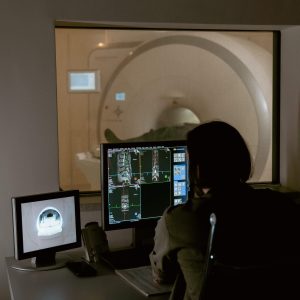Follicular Study, also known as follicle monitoring or ovarian monitoring, is a crucial diagnostic procedure conducted to monitor the development and maturation of ovarian follicles in the female reproductive system. It plays a vital role in assessing a woman’s fertility and aids in determining the optimal timing for various fertility treatments such as intrauterine insemination (IUI) and in vitro fertilization (IVF). Let’s delve into the detailed content for a follicular study per visit:
Introduction: The follicular study is a series of ultrasound examinations performed during a woman’s menstrual cycle to observe the growth of ovarian follicles. Each visit involves the visualization and measurement of these fluid-filled sacs within the ovaries. This procedure assists medical professionals in assessing the overall health of the ovaries and predicting ovulation.
Purpose of the Visit: During each follicular study visit, the primary objectives include:
- Monitoring Follicular Growth: The ultrasound scans allow medical practitioners to track the size and number of ovarian follicles. This information helps in predicting the most fertile period in the menstrual cycle.
- Timing Ovulation: By observing the dominant follicle’s progression, clinicians can predict the approximate time of ovulation. This is crucial for timing fertility treatments.
- Adjusting Treatment Plans: For women undergoing fertility treatments, such as IUI or IVF, follicular study results guide the timing of procedures and administration of medications.
Procedure: A typical follicular study per visit involves the following steps:
- Patient Preparation: The patient is asked to come with a full bladder, which offers a clear window for ultrasound visualization.
- Ultrasound Examination: A transvaginal ultrasound probe is gently inserted into the vagina to obtain high-resolution images of the pelvic region. This technique provides a detailed view of the ovaries and follicles.
- Follicle Measurement: The sonographer or medical professional measures the size and diameter of each visible ovarian follicle. The dominant follicle is the one most likely to release an egg during ovulation.
- Documentation: The findings are documented, including the sizes and locations of all observed follicles. This information is crucial for subsequent visits and treatment planning.
Interpreting Results: The ultrasound images and measurements provide valuable insights:
- Follicle Sizes: The dominant follicle’s size and growth rate are noted. Its size helps determine the readiness for ovulation.
- Endometrial Thickness: The thickness of the endometrial lining is measured to assess its receptivity for potential implantation.
- Hormone Levels: In some cases, blood tests may accompany follicular study visits to monitor hormone levels, enhancing the accuracy of predictions.
Follow-up and Treatment: Based on the follicular study results, medical practitioners can:
- Advise on Timing: Patients trying to conceive naturally can be advised on optimal intercourse timing.
- Fertility Treatments: For those undergoing fertility treatments, the data guides the timing of procedures and administration of ovulation-inducing medications.
- Additional Visits: In some cases, irregularities or unexpected developments may warrant additional visits to ensure accurate monitoring.





Reviews
There are no reviews yet.